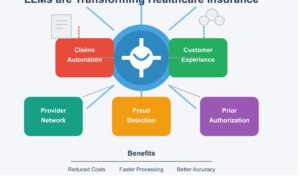Are you tired of paying sky-high rates for your car insurance? Well, buckle up because we’ve got some simple tricks that will help you save big on your next bill! From comparing quotes to adjusting your coverage levels, we’ve got all the tips and tricks you need to keep more money in your pocket. Say goodbye to overpriced premiums and hello to extra cash in your bank account – let’s get started on saving money on your car insurance bill today!
The importance of car insurance and the rising costs
Car insurance is a necessary expense for any car owner. It provides financial protection against damages or injuries caused by accidents, thefts, and natural disasters. Not having proper car insurance can lead to significant financial burdens in case of unforeseen incidents.
With the rising costs of car insurance premiums, many people are constantly looking for ways to save money on their bills. According to data from the National Association of Insurance Commissioners, the average American spends around $1,134 per year on car insurance. This amount may vary depending on factors such as age, driving history, location, and type of vehicle.
In recent years, there has been a steady increase in car insurance premiums due to various reasons. One of the main factors contributing to this rise is the increase in claim payouts. With more accidents occurring on roads and highways every day, insurers have to pay out larger sums in claims which ultimately leads to higher premiums for policyholders.
Another contributing factor is the advancements in technology used in vehicles. Modern cars are equipped with sophisticated safety features and sensors that aid in preventing accidents and reducing their severity when they do occur. However, these technological advancements come at a cost and are reflected in higher insurance premiums.
Understanding your coverage: Know what you need and what you can reduce
When it comes to car insurance, understanding your coverage is crucial in saving money on your premiums. Many people may not realize that they are paying for additional coverage that they do not actually need, resulting in higher costs. On the other hand, there may be some areas of coverage where you can reduce and save money without compromising your protection. In this section, we will explore the various aspects of car insurance coverage and how you can make informed decisions to save money on your policy.
The first step in understanding your coverage is knowing what type of insurance you need. This depends on factors such as the value of your vehicle, its age, and whether or not you have a loan on it. For instance, if you have an older car that is paid off and has a lower value, you may want to consider removing collision or comprehensive coverage as these are primarily designed for newer cars or those with outstanding loans.
Another aspect to consider is liability coverage. This covers damages or injuries you may cause to others while driving. While every state requires a certain minimum amount of liability coverage, it may be beneficial for some drivers to increase their limits for added protection. However, if you have a good driving record and feel confident in your ability to avoid accidents, reducing your liability coverage could lead to significant savings.
Factors that affect car insurance rates: How age, driving record, and location can impact your premiums
When it comes to car insurance rates, there are several factors that can play a significant role in determining how much you will pay for coverage. Your age, driving record, and location are some of the key factors that insurance companies consider when calculating premiums. Understanding these factors and their impact on your rates can help you make informed decisions to save money on your car insurance bill.
1. Age: One of the primary factors affecting car insurance rates is age. Generally, younger drivers under the age of 25 are considered high-risk by insurance companies as they have less driving experience and tend to be involved in more accidents. On the other hand, older drivers over the age of 65 may also face higher premiums due to potential health issues that could affect their ability to drive safely. This is why it’s important to shop around for quotes from different insurers as some may offer discounts for safe driving habits or for being a student with good grades.
2. Driving Record: Another crucial factor that affects car insurance rates is your driving record. Insurance companies use this information to assess your risk level as a driver based on past incidents or traffic violations. A clean driving record with no accidents or tickets typically results in lower premiums while having one or more at-fault accidents can lead to significant increases in premium costs. It’s essential to practice safe driving habits and follow all traffic rules to maintain a clean driving record and keep your insurance rates low.
3. Location: Where you live can also impact your car insurance rates significantly. Urban areas with high levels of traffic congestion tend to have higher premiums compared to rural areas with fewer cars on the road. This is because busy roads increase the chances of collisions and thefts, making urban areas riskier for insurers than rural ones.
Moreover, each state has its own set of minimum requirements for car insurance coverage, which affects premiums as well. For example, states like Michigan and Louisiana have notoriously high auto insurance rates due to their no-fault insurance systems, which cover personal injury regardless of who is at fault in an accident.
Shopping around for the best deals: How to compare quotes from different companies
When it comes to saving money on your car insurance bill, one of the most effective strategies is to shop around for the best deals. With so many insurance companies competing for business, comparing quotes from different companies can often lead to significant savings. However, this can also be an overwhelming task, as there are a plethora of insurance providers and policies available in the market. To help you navigate through this process, here are some tips on how to effectively compare quotes from different companies.
1. Understand Your Coverage Needs:
Before you start shopping around for car insurance quotes, it’s important to have a clear understanding of your coverage needs. This includes knowing the type and amount of coverage required by law in your state, as well as additional coverage that you may want to include for added protection. By having a clear idea of what you need, you can easily compare quotes with similar coverage options from different companies.
2. Gather Multiple Quotes:
Don’t settle for the first quote you receive or stick with your current provider just because it’s familiar. Make sure to gather multiple quotes from at least three different insurance companies before making a decision. This will give you a better idea of the average cost and ensure that you’re not overpaying for your coverage.
3. Use Online Comparison Tools:
There are several online platforms that allow users to compare quotes from multiple insurance providers at once – making it easier and faster than ever before. These tools use data directly from insurers and provide unbiased comparisons based on your specific coverage needs and driving history.
4 . Consider Discounts:
Many insurance companies offer discounts based on various factors such as age, driving record, or bundling policies (i.e., insuring both your car and home with the same company). Be sure to take advantage of any applicable discounts when comparing quotes as they can significantly impact the final price.
5 . Take Note Of Exclusions And Exceptions:
It’s essential to carefully review the coverage details of each quote to ensure that all of your requirements are met. Some companies may offer lower rates but have exclusions or exceptions that could leave you underinsured in case of an accident. Make sure to read through the fine print and ask questions if anything is unclear.
6 . Consider Customer Service Ratings:
Price is not the only factor to consider when comparing quotes from different insurance companies. It’s also important to look at their customer service ratings and reviews to get an idea of how they treat their policyholders. A company with a poor track record for customer service may not be worth the slight cost savings.
Taking advantage of discounts: The various types of discounts available and how to qualify for them
When it comes to car insurance, one of the best ways to save money is by taking advantage of discounts. Many insurance companies offer various types of discounts that can significantly reduce your premium rates. In this section, we will discuss the different types of discounts available and how you can qualify for them.
1. Good Driver Discount
The good driver discount is perhaps the most common type of discount offered by insurance companies. If you have a clean driving record with no accidents or traffic violations within a specific time frame, you may be eligible for this discount. This is because insurance companies consider drivers with a history of safe driving to be low-risk and less likely to make claims in the future.
2. Multi-Policy Discount
If you have multiple vehicles insured under the same policy or have both your home and car insured with the same company, you may be eligible for a multi-policy discount. By bundling your policies together, you can often get a lower overall rate compared to having separate policies from different insurance providers.
3. Low Mileage Discount
If you don’t drive your car frequently or have a short commute to work, then you may qualify for a low mileage discount. Insurance companies see those who drive fewer miles as less likely to get into an accident and therefore offer lower rates.
4. Good Student Discount
Students who maintain good grades in school are often rewarded with discounts on their car insurance premiums. Typically, this applies to high school and college students under 25 years old who have at least a B average.
5.Family Discount
Some insurance companies offer family discounts if multiple members of the same household are insured under one policy. This includes spouses and children living at home who also hold valid driver’s licenses.
To qualify for these discounts, it is essential to keep all your records up-to-date with your insurer and ensure that they have accurate information about your driving habits, grades (for students), and other relevant details. It is also essential to review your policy periodically and make sure you are taking advantage of all the available discounts.
Tips for lowering your premium: Simple steps you can take to lower your
Lowering your car insurance premium might seem like a daunting task, but with some simple steps and strategies, you can easily reduce the amount you pay for your coverage. Here are some tips to help you save money on your car insurance bill:
1. Increase Your Deductible: One of the easiest ways to lower your car insurance premium is by opting for a higher deductible. This means that in case of an accident or claim, you will have to pay a larger portion out of pocket before your insurance kicks in. However, it also means that your monthly premiums will be significantly lower.
2. Avoid Modifications: Adding modifications like spoilers or tinted windows to your vehicle may make it more attractive and personalized, but it can also increase the cost of your insurance. This is because these enhancements can make the car more expensive to repair or replace.
3. Compare Quotes: Shopping around and comparing quotes from different insurers can help you find the best deal for your specific needs and budget. Don’t be afraid to negotiate with insurance companies and ask for discounts or special offers.
4. Drive Safely: Maintaining a clean driving record without any violations or accidents can also lead to lower premiums. Many insurers offer discounts for safe drivers, so it pays off to practice caution on the road.
5.Eliminate Unnecessary Coverage: Take a look at all the components included in your car insurance policy and determine if there are any unnecessary coverages that you can eliminate. For example, if you no longer own an older car, getting rid of collision coverage could save you money.
6.Take Advantage of Discounts: Many insurers provide discounts based on certain criteria such as being a student with good grades, having multiple vehicles insured under one policy, bundling home and auto policies with the same company, etc. Make sure to inquire about all available discounts when shopping for car insurance.
7.Improve Your Credit Score: Believe it or not, credit scores can also affect the cost of your insurance premium. Insurers use credit scores to determine the risk level of a potential customer, and those with higher scores are usually given better rates.
8.Increase Your Coverage Gradually: As your car ages, you may consider decreasing certain coverages such as collision or comprehensive since the value of your vehicle decreases over time. This can help you save money on your premiums while still maintaining adequate coverage.
Conclusion
In conclusion, by implementing these simple tricks, you can save big on your car insurance bill without compromising on coverage. Remember to shop around for the best rates and discounts, maintain a good driving record, and be proactive in adjusting your coverage as needed. With some effort and research, you can significantly reduce the cost of your car insurance while still ensuring protection for yourself and your vehicle. So don’t wait any longer – start implementing these tricks today to see how much money you can save!



































